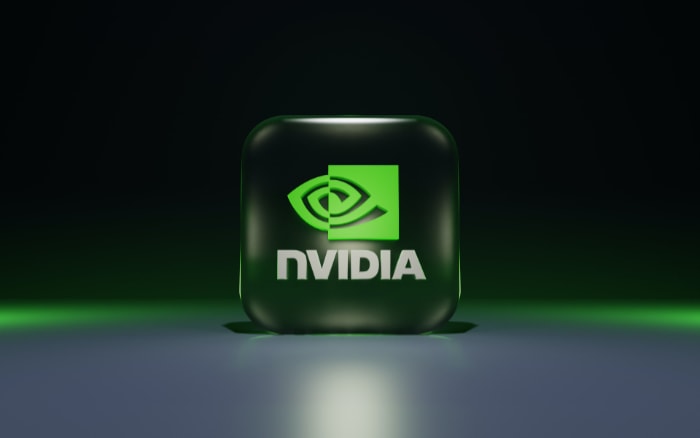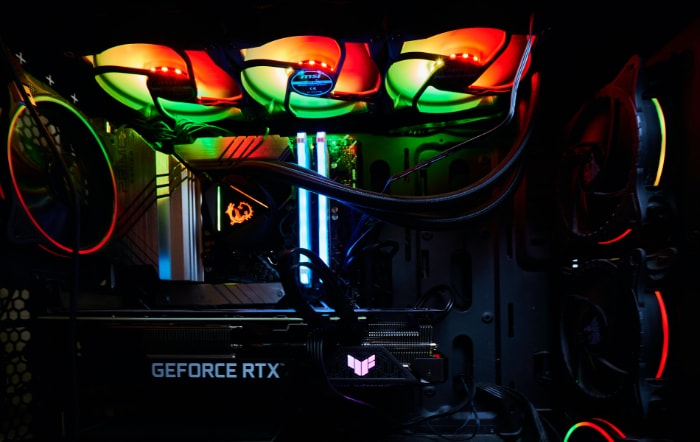Is G-Sync Worth It? An In-Depth Examination

In a world where gaming has become more than a hobby, but a lifestyle and, for some, a profession, the quality of gaming equipment can significantly affect the gaming experience. Among the technologies at the forefront of enhancing this experience is G-Sync, developed by Nvidia.
But what is G-Sync, and more importantly, is investing in G-Sync worth it for the average gamer?
G-Sync, in simple terms, is a technology designed to eliminate graphical issues such as screen tearing and stuttering that can hamper the gaming experience. It ensures a smooth and synchronized performance between your computer’s graphics card and your monitor.
While it promises a high-quality, immersive gaming encounter, it comes with a price tag, causing many potential users to weigh its advantages against its cost.
Understanding G-Sync: An Overview
To thoroughly evaluate whether G-Sync is a worthy investment, one must first understand the technology, its origin, and its purpose in the gaming ecosystem.
Here, we delve into the intricate details of G-Sync, starting from the problem it aims to solve and the unique solution it offers, to its historical development and the competitive alternatives in the market.
Detailed Explanation of G-Sync
The Problem it Solves: Screen Tearing and Stuttering
In gaming, screen tearing and stuttering can be major impediments to the gaming experience. Screen tearing occurs when your graphics processing unit (GPU) and your display are out of sync, causing the display to show multiple frames in a single screen draw.
This results in visuals that appear ‘torn’. Stuttering, on the other hand, happens when the display refresh rate is higher than the frame rate output by the GPU, causing noticeable jumps or delays in the on-screen action.
How G-Sync Works: Communication between GPU and Display
G-Sync solves these issues by allowing your GPU to control the refresh rate of your monitor. This synchronization ensures that the monitor displays new frames as soon as they are rendered by the GPU, effectively eliminating screen tearing and reducing stuttering.
By dynamically matching the display’s refresh rate to the GPU’s frame rate, G-Sync delivers a smooth, tear-free gaming experience.
The History and Development of G-Sync
Introduced by Nvidia in 2013, G-Sync was developed as a revolutionary solution to common graphical issues plaguing gamers. Its inception marked a new era in gaming technology, pushing the boundaries for visual fidelity and smoothness.
Over the years, Nvidia has continued to refine and expand the technology, ensuring it remains at the cutting edge of the gaming industry.
Other Alternative Technologies – FreeSync
While G-Sync was a pioneering force, it’s not the only technology striving to optimize your gaming experience. AMD’s FreeSync, developed as a response to G-Sync, serves a similar purpose but approaches the problem differently, which we will further explore in a later section of this article.
Understanding these alternatives is crucial when assessing the value proposition of G-Sync.
The Benefits of G-Sync
Once the basics of G-Sync are understood, the next step in our comprehensive exploration is to outline the advantages this technology brings to the table. By highlighting its impact on gaming experience, adaptability to various scenarios, and suitability for different types of games, this section aims to provide valuable insights into the inherent benefits of G-Sync.
Enhanced Gaming Experience
Smoother Visuals
One of the most obvious and immediate benefits of G-Sync is the remarkable enhancement in visual quality. By eradicating screen tearing and reducing stuttering, G-Sync delivers smoother, more fluid visuals, providing an immersive gaming experience that’s particularly noticeable in fast-paced or graphically intense games.
Reduced Input Lag
G-Sync also addresses the issue of input lag, which refers to the delay between the time you input a command on your controller or keyboard and when it’s reflected on the screen. With G-Sync, the synchronization between the GPU and the display reduces this lag, resulting in quicker, more responsive gameplay.
Adaptive Refresh Rate: Suitability for High-End Gaming
G-Sync’s ability to adaptively match the monitor’s refresh rate to the frame rate outputted by the GPU makes it an excellent choice for high-end gaming. This feature ensures that even when playing graphically demanding games that might cause frame rates to fluctuate, your gaming experience remains consistent and enjoyable.
Specific Scenarios Where G-Sync Shines
Competitive Gaming
For competitive gamers, where every millisecond counts, the reduction in input lag and screen tear provided by G-Sync can potentially be the difference between victory and defeat. The heightened responsiveness and visual fluidity can provide a competitive edge in high-stakes matches.
High-End Single-Player Games
Single-player games, especially those with rich, detailed environments, can greatly benefit from G-Sync. As these games often have dynamic and intensive graphical elements, the adaptive refresh rate technology of G-Sync allows for a smooth, immersive experience without visual interruptions.
The Drawbacks of G-Sync

While G-Sync undeniably brings a suite of benefits to the gaming table, it’s important to balance these advantages with an understanding of the technology’s drawbacks. By considering aspects like cost, compatibility, and power consumption, this section aims to present an unbiased view of G-Sync’s limitations.
Higher Cost of G-Sync Monitors
The most significant downside of G-Sync is its cost. G-Sync monitors generally carry a higher price tag than their standard or FreeSync counterparts due to the additional hardware module required for G-Sync to function.
This added expense can be a deterrent for gamers on a budget or those who don’t prioritize the visual quality enhancements that G-Sync offers.
Limited Compatibility – Nvidia-Specific
G-Sync technology is exclusive to Nvidia graphics cards. This means that if you have a GPU from another manufacturer, such as AMD, you won’t be able to take advantage of G-Sync. This compatibility restriction can limit your choices when it comes to building or upgrading your gaming setup.
Power Consumption Concerns
G-Sync can potentially lead to increased power consumption. When the technology is active, both the GPU and the display work in tandem more frequently, which can result in higher energy use. This increased power draw might be a concern for users with energy efficiency in mind.
Comparison with FreeSync’s Drawbacks
While G-Sync has its limitations, it’s important to note that its primary competitor, FreeSync, also has drawbacks, such as varying performance across different monitors and less consistent standards. These aspects should be considered when comparing the two technologies, which we will cover in detail in the next section.
G-Sync vs. FreeSync: A Detailed Comparison
When considering adaptive sync technology for your gaming setup, the two leading options are Nvidia’s G-Sync and AMD’s FreeSync. This section aims to provide a comprehensive comparison between the two, covering aspects of technology, performance, price, and compatibility.
By examining these features, we can better assess the unique value proposition each brings to the gaming table.
Technology Comparison: How Each Works
Although both G-Sync and FreeSync aim to reduce screen tearing and stuttering, the technology behind each differs:
G-Sync employs a proprietary module in the monitor that communicates with the Nvidia GPU, ensuring precise synchronization between the frame rate and the monitor’s refresh rate.
FreeSync, on the other hand, leverages the adaptive synchronization standard in the DisplayPort specification (and more recently HDMI), eliminating the need for additional hardware.
Performance Comparison: Frame Rate, Visual Quality
Both G-Sync and FreeSync effectively reduce screen tearing and stuttering, but the performance can vary:
G-Sync tends to offer a more consistent performance across different monitors due to the standardization enforced by the proprietary module. This means that the visual quality and smoothness are relatively predictable with G-Sync-enabled monitors.
FreeSync performance can vary more widely between different monitors as it doesn’t enforce as strict standards. Some FreeSync monitors offer a performance close to G-Sync, while others may have narrower adaptive refresh rate ranges or minor visual artifacts.
Price Comparison: Cost of Monitors
Price is a crucial factor for many gamers, and there’s a significant difference between G-Sync and FreeSync in this regard:
G-Sync monitors generally cost more due to the proprietary module required, which increases manufacturing costs.
FreeSync, leveraging an open standard, usually comes with a lower price tag, making FreeSync monitors more affordable.
Compatibility: Range of Graphics Cards Supported
Compatibility is another essential consideration when choosing between G-Sync and FreeSync:
G-Sync is designed to work with Nvidia GPUs exclusively, limiting its compatibility to Nvidia products.
FreeSync, as an open standard, initially only worked with AMD GPUs, but more recent Nvidia GPUs have started supporting FreeSync as well.
In sum, the choice between G-Sync and FreeSync largely depends on personal priorities and existing hardware. If you value consistent performance and have an Nvidia GPU, G-Sync could be worth the extra cost.
However, if budget constraints are a concern and you have an AMD or a newer Nvidia GPU, FreeSync might be a more suitable choice.
Is G-Sync Worth the Extra Cost?
The ultimate question many gamers grapple with is whether the additional expense associated with G-Sync is justified. To answer this question, it’s essential to consider user-specific factors, long-term considerations, and various other decision-making elements.
This section aims to guide you through these aspects, helping you decide if G-Sync is a worthy investment for your particular gaming needs.
User-Specific Considerations
Types of Games Played
The value of G-Sync can depend significantly on the types of games you play. If you primarily play fast-paced, competitive games or graphically intense single-player games where smooth visuals can enhance the experience, G-Sync might be worth the cost.
However, if you mostly play less demanding or slower-paced games, you may not notice the benefits of G-Sync as much.
Importance of Visual Quality to the User
The importance you place on visual quality is another key factor. If subtle screen tearing or slight input lag distracts or frustrates you, the smooth, responsive gameplay G-Sync offers might be worth the extra cost.
On the other hand, if you don’t mind minor visual imperfections, a standard or FreeSync monitor might suffice.
Budget Considerations
Ultimately, your budget will play a significant role in your decision. If the higher cost of G-Sync is within your budget and you value its benefits, it might be a worthwhile investment.
However, if you’re on a tighter budget, the more affordable FreeSync or even a standard monitor could be the better option.
Long-Term Considerations – Future-Proofing Your Setup
G-Sync can be seen as a future-proofing investment. As games become increasingly graphically intensive, the benefits of G-Sync may become more pronounced.
If you plan to play the latest games in the coming years, investing in G-Sync now could ensure a smoother, more enjoyable experience in the future.
Decision-Making Guide Based on Various Factors
While it’s challenging to provide a definitive answer to whether G-Sync is worth the extra cost, considering the factors outlined above should help you make an informed decision. Evaluate your gaming habits, the importance you place on visual perfection, your budget, and your future gaming plans.
It’s about finding the balance that best suits your personal gaming needs and preferences.
In the end, G-Sync is just one of many components that contribute to your overall gaming experience. Its value is subjective, and whether it’s worth the extra cost is a decision that ultimately lies with each individual gamer.



